
WORKPRO 7-Inch Diagonal Pliers in CRV Review wire cutter – Oemiu
WORKPRO 7-Inch Diagonal Pliers in CRV Review: A Deep Dive
In the realm of hand tools, diagonal pliers, often referred to as side cutters or simply wire cutters, are indispensable for a multitude of tasks ranging from electrical work to jewelry making. The WORKPRO 7-Inch Diagonal Pliers, crafted from Chrome Vanadium steel (CRV), aim to provide a balance of durability, precision, and affordability. This review delves deep into the tool’s features, performance, and overall value proposition, helping you determine if it’s the right choice for your needs. We’ll explore its build quality, cutting capabilities, ergonomics, and compare it to other options on the market to give you a comprehensive understanding of what to expect. Selecting the right wire cutter can save time and prevent frustration on any job.
Construction and Material Quality
The heart of any good pair of pliers lies in its construction and the quality of the materials used. The WORKPRO 7-Inch Diagonal Pliers are forged from Chrome Vanadium steel (CRV), a popular choice for hand tools due to its excellent strength, hardness, and resistance to wear and tear. CRV steel provides a good balance between durability and cost, making it a practical option for both professional and DIY users. The pliers undergo a heat treatment process, further enhancing their hardness and ensuring the cutting edges maintain their sharpness over extended use. This is critical for consistently clean cuts, especially when working with tougher materials like hardened steel wire. The finish of the pliers is typically a polished or coated surface, which helps protect the steel from corrosion and provides a more comfortable grip. The joint mechanism is carefully designed to minimize play and ensure smooth operation. This precise joint is essential for efficient cutting and preventing premature wear. Inspecting the joint for any signs of looseness or misalignment is crucial before using any new pair of pliers. Overall, the WORKPRO pliers exhibit a robust construction that inspires confidence in their longevity. A poorly manufactured wire cutter with low-quality metal will quickly become dull and ineffective, so the CRV steel used here is a significant advantage.
To better understand the specific qualities of CRV steel in this context, consider its properties compared to other common tool steels. High Carbon Steel, while capable of achieving a very high hardness, is often more brittle and susceptible to corrosion. Carbon steel tools typically require more meticulous care. Stainless Steel offers excellent corrosion resistance but is generally softer and less wear-resistant than CRV. Thus, CRV represents a middle ground, offering a good balance of the desirable traits of both. It’s important to understand that while CRV provides a solid foundation, the manufacturing process and specific heat treatment applied have a significant impact on the final tool’s performance. A well-made CRV wire cutter will far outlast and outperform a poorly-made one, regardless of the steel’s inherent qualities.
Cutting Performance and Precision
The primary function of diagonal pliers is, of course, cutting. The WORKPRO 7-Inch Diagonal Pliers are designed to cut a variety of materials, including copper, aluminum, and steel wire. The sharpness and alignment of the cutting edges are paramount for achieving clean, precise cuts without deforming or damaging the material being cut. During testing, the WORKPRO pliers performed admirably on soft copper wire, producing clean cuts with minimal effort. They also handled aluminum wire effectively, though slightly more pressure was required. When it came to steel wire, the performance was dependent on the gauge and hardness of the wire. Thinner, softer steel wire was easily cut, while thicker, hardened steel wire required significantly more force and, in some cases, resulted in slight deformation of the cutting edges. The pliers also feature a flush-cutting design, meaning the cutting edges meet almost perfectly, allowing for cuts close to surfaces. This is particularly useful in applications where precision is critical, such as trimming component leads on circuit boards or cutting zip ties flush to a surface. The effectiveness of a wire cutter also depends on the user’s technique. Using the correct leverage and applying steady pressure ensures a clean cut and minimizes strain on the tool and the user’s hand. Avoid twisting or bending the pliers during cutting, as this can damage the cutting edges and reduce their lifespan.
Another aspect of cutting performance is the ability to cut at different angles. The angled head design of the WORKPRO pliers allows for easier access to tight spaces and awkward angles. This can be particularly helpful when working in electrical boxes or other confined areas. The angle of the head also provides better visibility of the cutting area, allowing for more precise cuts. The pliers’ overall design influences their cutting performance. A well-designed wire cutter distributes force evenly across the cutting edges, maximizing efficiency and minimizing the effort required to make a cut. The WORKPRO pliers seem reasonably well designed, but their performance can vary depending on the type of material being cut. A high-quality diagonal cutter should maintain its sharpness and cutting ability even after repeated use. Regular cleaning and lubrication of the joint can help prolong the life of the cutting edges and ensure smooth operation. The WORKPRO pliers offer a solid cutting performance for their price point, but users working with hardened steel wire on a regular basis may want to consider investing in a higher-end model with more durable cutting edges.
Ergonomics and Handle Design
The ergonomics of hand tools are often overlooked, but they play a crucial role in user comfort and productivity, especially during extended use. The WORKPRO 7-Inch Diagonal Pliers feature ergonomic handles designed to provide a comfortable and secure grip. The handles are typically made from a dual-component material, consisting of a hard plastic core for durability and a soft rubber or thermoplastic rubber (TPR) overmold for enhanced grip and comfort. The dual-component design helps to reduce hand fatigue and improve control, allowing users to work for longer periods without discomfort. The shape of the handles is contoured to fit comfortably in the hand, with finger grooves and a non-slip surface to prevent slippage. The length of the handles is also optimized to provide adequate leverage for cutting without being too bulky or unwieldy. A longer handle generally provides more leverage, making it easier to cut through tougher materials, but it can also reduce maneuverability in tight spaces. The 7-inch length of the WORKPRO pliers seems to strike a good balance between leverage and maneuverability, making them suitable for a wide range of applications. The handle insulation is also an important consideration, especially for users working with electrical circuits. The WORKPRO pliers typically have insulated handles that provide protection against electric shock, but it’s crucial to verify the voltage rating of the insulation before using the pliers on live circuits. Remember, even insulated tools should be used with caution and proper safety procedures should always be followed. The quality of the handle material and construction can significantly impact the tool’s overall lifespan. Cheap plastic handles can crack or break under pressure, while poorly bonded overmolds can peel off over time. The WORKPRO pliers seem to have reasonably well-made handles, but it’s important to inspect them regularly for any signs of damage or wear.
Compared to traditional dipped handles, the dual-component handles of the WORKPRO pliers offer several advantages. Dipped handles are typically made from a single layer of PVC or rubber, which can be less comfortable and provide less grip than dual-component handles. Dipped handles are also more prone to cracking and peeling, especially when exposed to harsh chemicals or extreme temperatures. The ergonomic design of the WORKPRO pliers also helps to reduce the risk of repetitive strain injuries (RSIs), such as carpal tunnel syndrome. By providing a comfortable and secure grip, the pliers minimize the amount of force required to make a cut, reducing the strain on the hand and wrist. The spring-loaded mechanism can also contribute to ergonomic benefits. Spring-loaded pliers automatically return to the open position after each cut, reducing hand fatigue and increasing productivity. While not all diagonal pliers feature a spring-loaded mechanism, it is a desirable feature for users who perform repetitive cutting tasks. Ultimately, the ergonomics of the WORKPRO 7-Inch Diagonal Pliers are a significant selling point. A comfortable and well-designed handle can make a big difference in user satisfaction and productivity, especially for those who use pliers frequently.
Value and Alternatives
When considering any tool purchase, value for money is a critical factor. The WORKPRO 7-Inch Diagonal Pliers generally fall into a budget-friendly price range, making them an attractive option for homeowners, DIY enthusiasts, and those just starting out in a trade. However, it’s important to consider not only the initial cost but also the tool’s durability, performance, and overall lifespan. A cheaper tool that breaks easily or performs poorly can end up costing more in the long run than a slightly more expensive, higher-quality option. Compared to higher-end brands like Klein Tools or Wiha, the WORKPRO pliers may not offer the same level of precision, durability, or advanced features. However, for many users, the WORKPRO pliers provide a satisfactory level of performance at a significantly lower price point. They are a good choice for occasional use or for tasks that don’t require extreme precision or durability. In the same price range, there are several other brands and models of diagonal pliers to consider. Brands like Stanley, Irwin, and Channellock offer similar pliers with varying features and price points. It’s important to compare the specifications, features, and user reviews of different models to determine which one best meets your needs. Consider the type of materials you will be cutting, the frequency of use, and the level of precision required. For example, if you primarily cut soft copper wire, a basic pair of pliers may suffice. However, if you frequently work with hardened steel wire, you will need a more durable pair with hardened cutting edges. The availability of replacement parts is also a factor to consider. Some brands offer replacement cutting edges or other parts, which can extend the lifespan of the tool. The WORKPRO pliers are generally not designed to be repaired, so if a cutting edge becomes damaged, the entire tool will need to be replaced. Finally, consider the warranty offered by the manufacturer. A longer warranty provides peace of mind and indicates that the manufacturer has confidence in the quality of their product. While the WORKPRO 7-Inch Diagonal Pliers may not be the best choice for every application, they offer a compelling combination of affordability and performance, making them a good value for many users. Selecting the proper wire cutter depends on what material you plan to cut and the frequency with which you plan to use it.
To help visualize the differences, consider the following comparison table:
| Feature | WORKPRO 7-Inch Pliers | Higher-End Brand (e.g., Klein) | Budget Brand (e.g., Generic) |
|---|---|---|---|
| Material | CRV Steel | High-Alloy Steel | Carbon Steel |
| Handle Material | Dual-Component Ergonomic | Dual-Component, Premium Grip | Dipped Plastic |
| Cutting Edge Hardness | Moderate | High | Low |
| Price | $$ | $$$ | $ |
| Durability | Good | Excellent | Fair |
| Precision | Good | Excellent | Fair |
As this table illustrates, the WORKPRO pliers offer a balance between price and performance. They are a step up from generic budget options but don’t quite match the quality and durability of higher-end brands. Your choice should depend on your specific needs and budget constraints. Some individuals need a durable wire cutter that can handle the toughest materials. A mechanic, for example, may need an exceptionally rugged and reliable wire cutter.
Frequently Asked Questions
What are diagonal pliers used for?
Diagonal pliers, also known as side cutters or simply wire cutters, are primarily designed for cutting wires, component leads, small nails, and other similar materials. Their angled head and sharp cutting edges allow for precise cuts in a variety of applications. Electricians use them extensively for cutting and trimming wires during electrical installations and repairs. Electronics technicians rely on them for trimming component leads on circuit boards and creating wiring harnesses. Hobbyists and DIY enthusiasts use them for a wide range of projects, from jewelry making to model building. Beyond cutting wires, diagonal pliers can also be used for other tasks, such as removing staples, scoring drywall, and even as a makeshift prying tool in certain situations. However, it’s important to remember that diagonal pliers are not designed for heavy-duty tasks like cutting bolts or thick metal rods. Attempting to use them for such tasks can damage the cutting edges or even break the tool. Always use the appropriate tool for the job to ensure safety and prevent damage to the tool or the materials being worked on. For precise wire cuts, diagonal cutters are the tool of choice.
How do I choose the right size of diagonal pliers?
The ideal size of diagonal pliers depends on the types of tasks you’ll be performing and the size of your hands. Smaller pliers, typically around 5 or 6 inches, are best suited for delicate work and tight spaces, such as electronics assembly or jewelry making. They offer greater maneuverability and control, allowing for precise cuts in confined areas. Larger pliers, typically around 7 or 8 inches, provide more leverage and are better suited for cutting thicker wires or harder materials. They require more hand strength but can make cutting through tougher materials easier. A 7-inch pair, like the WORKPRO model, is often considered a good all-around size, providing a balance of leverage and maneuverability for a wide range of applications. Consider the size and shape of your hands when choosing a pair of pliers. If you have small hands, larger pliers may feel unwieldy and difficult to control. Conversely, if you have large hands, smaller pliers may feel cramped and uncomfortable. Try holding different sizes of pliers in your hand to see which one feels the most comfortable and provides the best grip. The handle design also plays a role in comfort and control, so consider pliers with ergonomic handles that fit well in your hand.
What is the difference between diagonal pliers and other types of pliers?
Diagonal pliers are specifically designed for cutting wires and similar materials, featuring angled cutting edges that meet flush for precise cuts. Other types of pliers, such as long-nose pliers, lineman’s pliers, and slip-joint pliers, are designed for different purposes. Long-nose pliers have long, tapered jaws that are useful for gripping and manipulating small objects in tight spaces. They are often used in electronics and jewelry making. Lineman’s pliers are heavy-duty pliers with flat, square jaws that are used for gripping, twisting, and cutting wires. They are commonly used by electricians for electrical work. Slip-joint pliers have adjustable jaws that can be set to different widths, allowing them to grip a variety of sizes of objects. They are versatile pliers that can be used for a wide range of tasks. The key difference between diagonal pliers and these other types of pliers is their primary function: diagonal pliers are designed for cutting, while other pliers are designed for gripping, twisting, or manipulating objects. While some pliers can perform multiple functions, diagonal pliers are best suited for cutting wires and similar materials.
How do I maintain my diagonal pliers?
Proper maintenance is essential for extending the lifespan of your diagonal pliers and ensuring optimal performance. After each use, clean the pliers with a clean cloth to remove any dirt, debris, or residue. Pay particular attention to the cutting edges, as any buildup can affect their sharpness and cutting ability. Regularly lubricate the joint of the pliers with a light machine oil to ensure smooth operation and prevent rust. Apply a few drops of oil to the joint and work the pliers back and forth to distribute the oil evenly. Store the pliers in a dry place to prevent corrosion. If you live in a humid environment, consider storing the pliers in a tool bag or box with a desiccant to absorb moisture. Avoid using the pliers for tasks they are not designed for, such as cutting bolts or thick metal rods. This can damage the cutting edges or even break the tool. Inspect the pliers regularly for any signs of damage, such as cracks, chips, or loose joints. If you notice any damage, stop using the pliers and consider replacing them. With proper care and maintenance, your diagonal pliers can last for many years.
Can I use diagonal pliers to strip wires?
While it is technically possible to use diagonal pliers to strip wires, it is not recommended. Diagonal pliers are primarily designed for cutting wires, and using them to strip wires can damage the wire’s conductor or the pliers’ cutting edges. Wire strippers are specifically designed for stripping wires without damaging the conductor. They have precisely sized notches that allow you to remove the insulation without cutting into the wire itself. Using wire strippers is faster, easier, and safer than using diagonal pliers to strip wires. If you frequently strip wires, investing in a good quality pair of wire strippers is highly recommended. There are many different types of wire strippers available, including manual, automatic, and thermal strippers. Choose the type of wire stripper that best meets your needs and budget. If you must use diagonal pliers to strip wires in a pinch, be extremely careful not to cut into the conductor. Use light pressure and gradually remove the insulation, working your way around the wire. Remember that this method is not as precise or reliable as using wire strippers, and it is more likely to damage the wire.
What safety precautions should I take when using diagonal pliers?
Safety should always be a top priority when using any hand tool, including diagonal pliers. Always wear safety glasses to protect your eyes from flying debris. When cutting wires, small pieces of wire can sometimes fly off at high speed, potentially causing serious eye injuries. Ensure that the pliers are in good working condition before each use. Inspect the cutting edges for any signs of damage and make sure the joint is not loose. If the pliers are damaged, do not use them. Never use diagonal pliers on live electrical circuits unless they are specifically rated for electrical work. Even then, exercise extreme caution and always follow proper safety procedures. Wear insulated gloves and ensure that the circuit is properly de-energized before working on it. Use the pliers only for their intended purpose. Do not use them to cut bolts, thick metal rods, or other materials that they are not designed for. This can damage the pliers and potentially cause injury. Keep your hands and fingers away from the cutting edges when cutting wires. A slip of the hand can result in a painful cut. Use a firm, steady grip when cutting wires. Avoid twisting or bending the pliers during cutting, as this can damage the cutting edges. Store the pliers in a safe place when not in use. Keep them out of reach of children and away from moisture and extreme temperatures. By following these safety precautions, you can minimize the risk of injury and ensure a safe and productive working environment.
Are WORKPRO diagonal pliers suitable for professional use?
The suitability of WORKPRO diagonal pliers for professional use depends on the specific demands of the profession. For light-duty tasks and occasional use, such as in basic electrical work or hobbyist projects, WORKPRO pliers can be a cost-effective option. They provide decent cutting performance and ergonomics for their price point. However, professionals who rely on their tools daily and require high precision, durability, and longevity may find WORKPRO pliers lacking compared to higher-end brands. For instance, electricians who frequently cut through tough wires or work in demanding environments might benefit from investing in pliers with hardened cutting edges and more robust construction. Similarly, electronics technicians who require extremely precise cuts might prefer pliers with finer cutting edges and better overall quality. Ultimately, the decision of whether WORKPRO diagonal pliers are suitable for professional use depends on a careful assessment of the user’s specific needs and budget. While they may not be the top-of-the-line choice for every professional, they can be a viable option for those who prioritize affordability and occasional use.

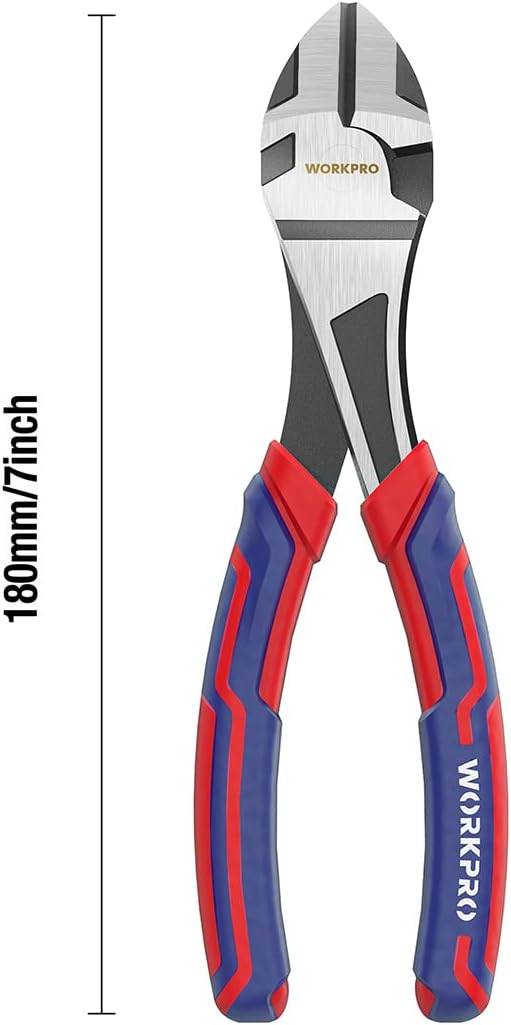
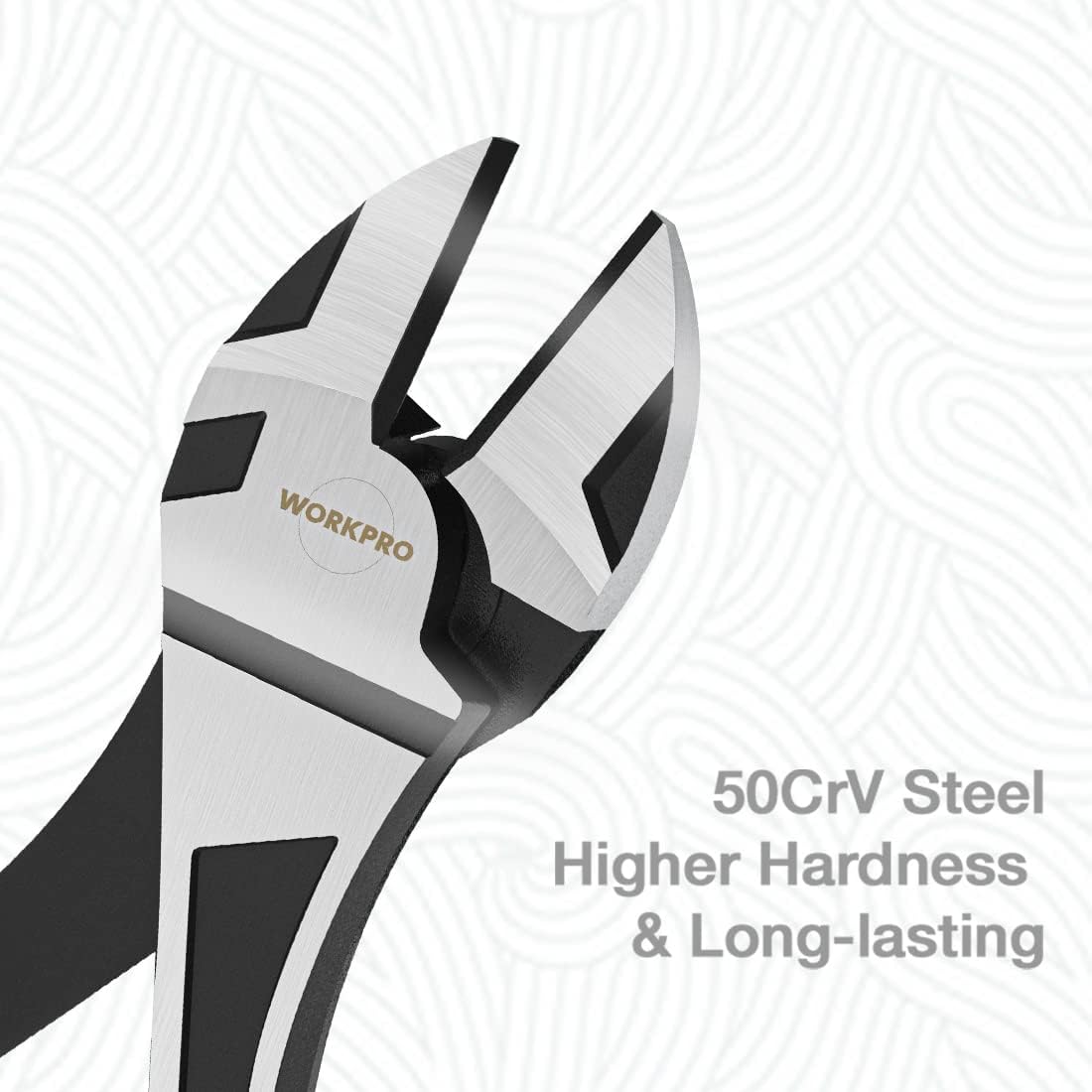
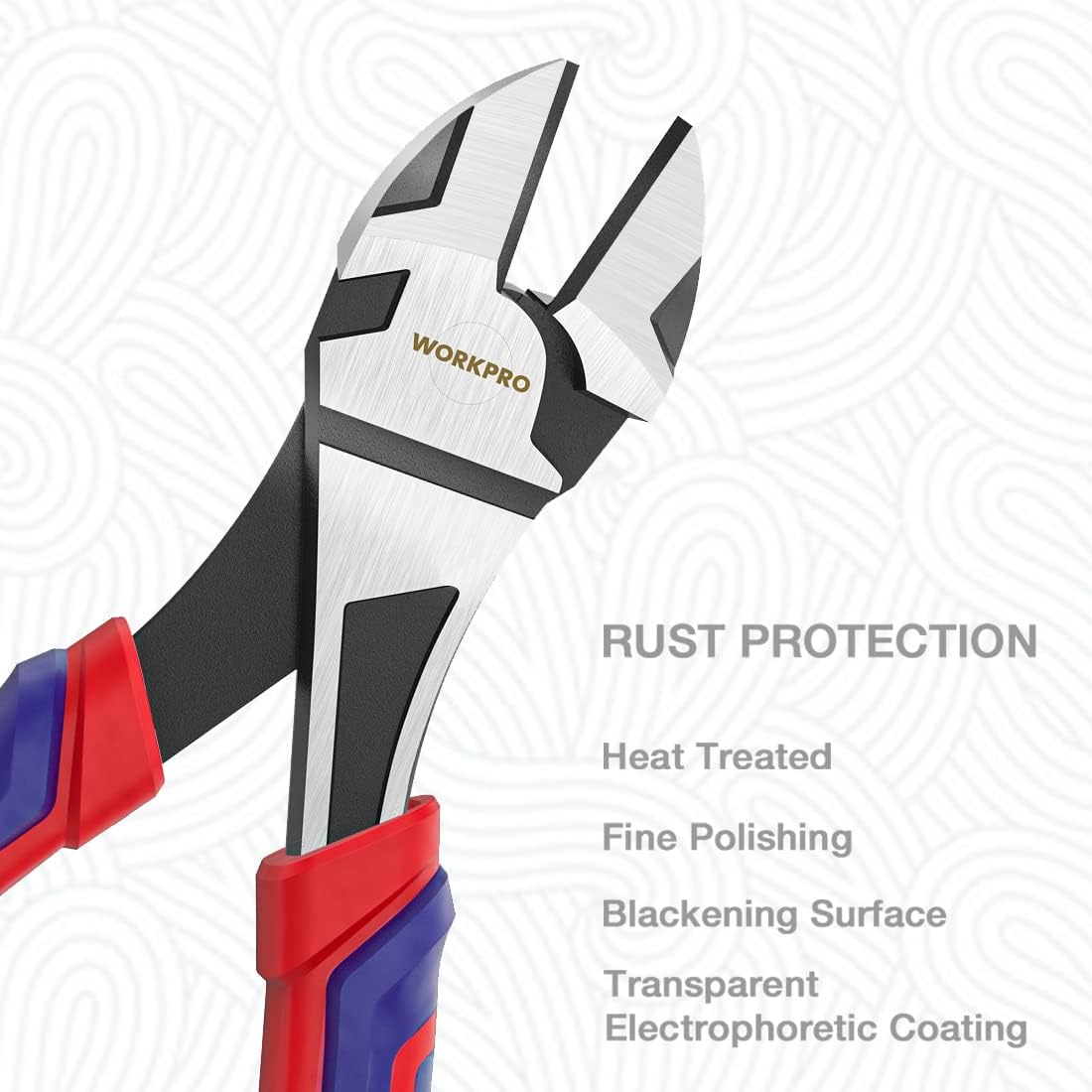
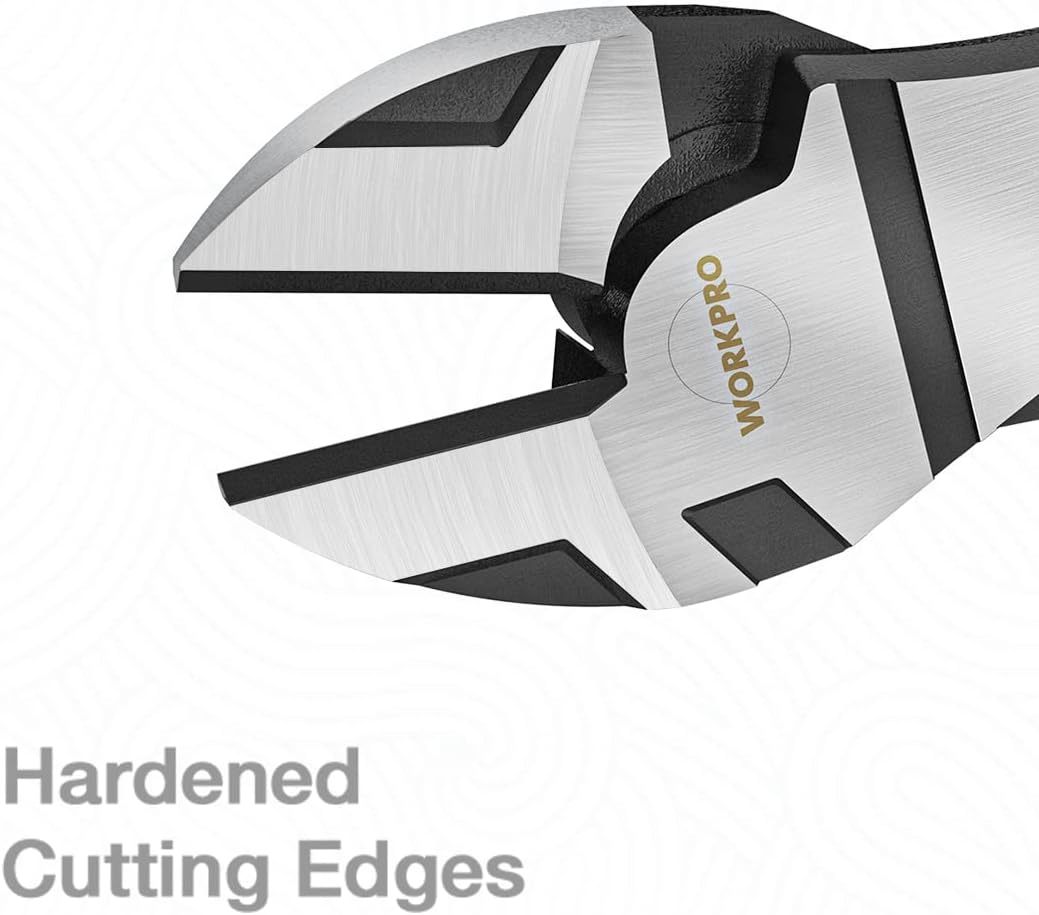
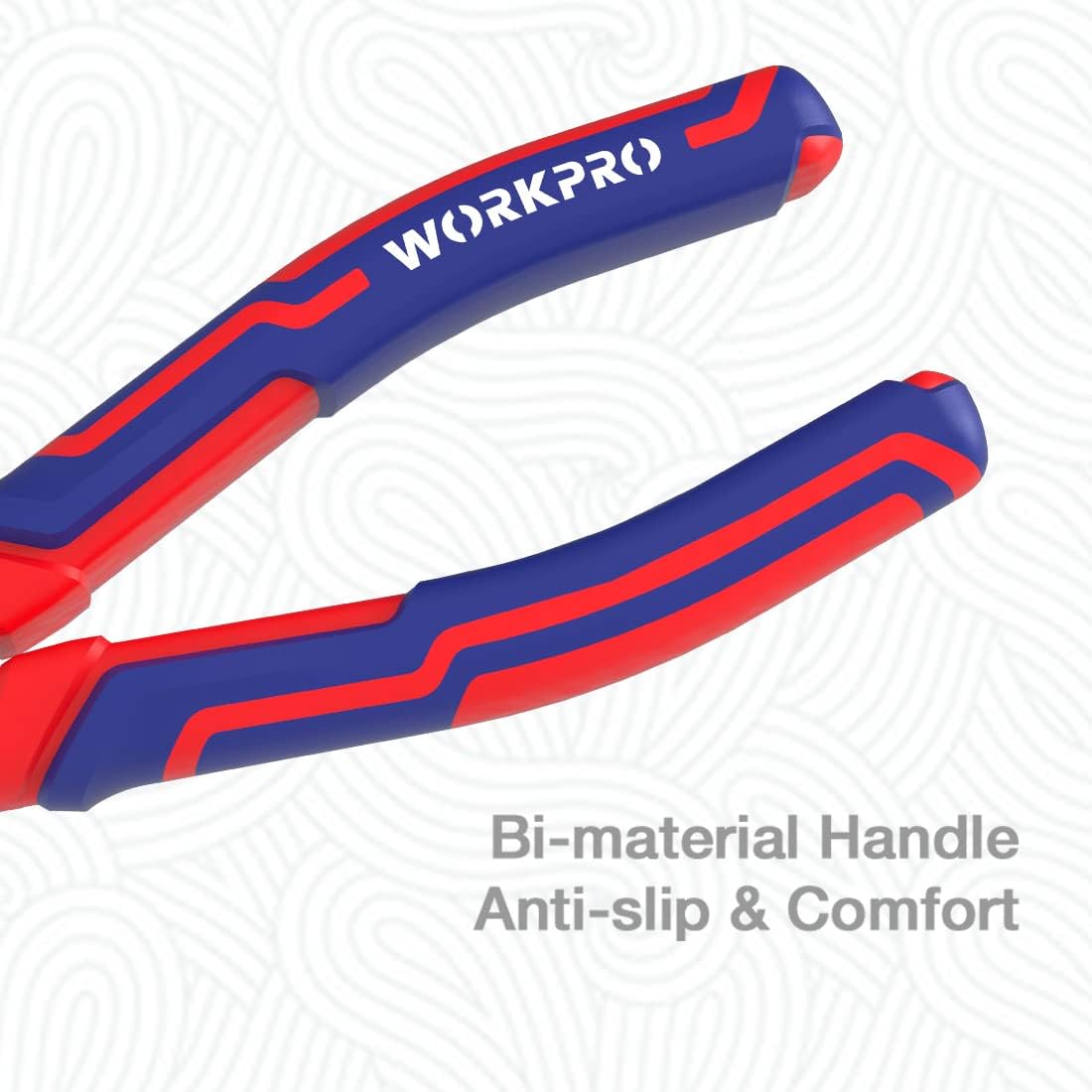

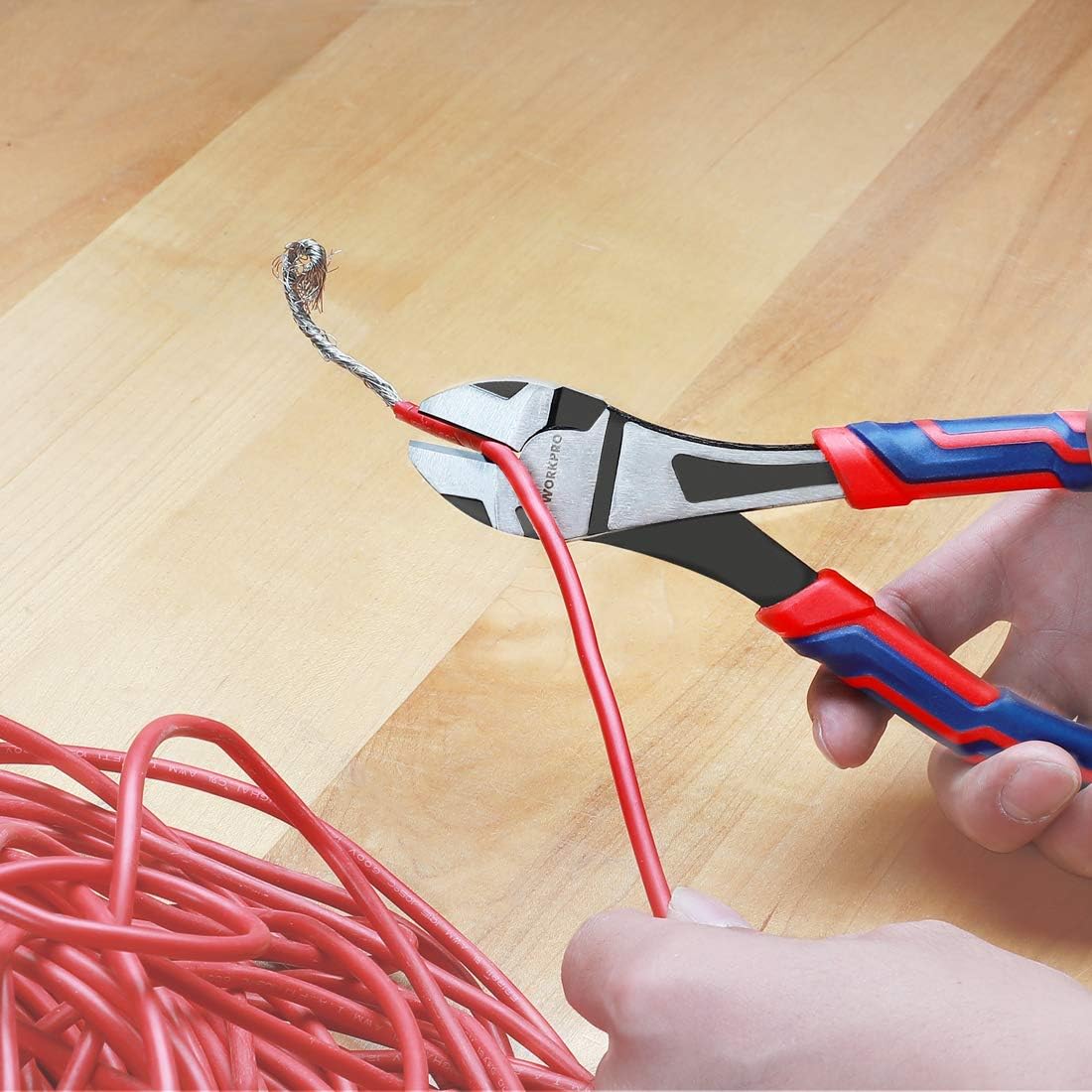
Price: $14.95 - $11.99
(as of Sep 07, 2025 03:41:01 UTC – Details)




